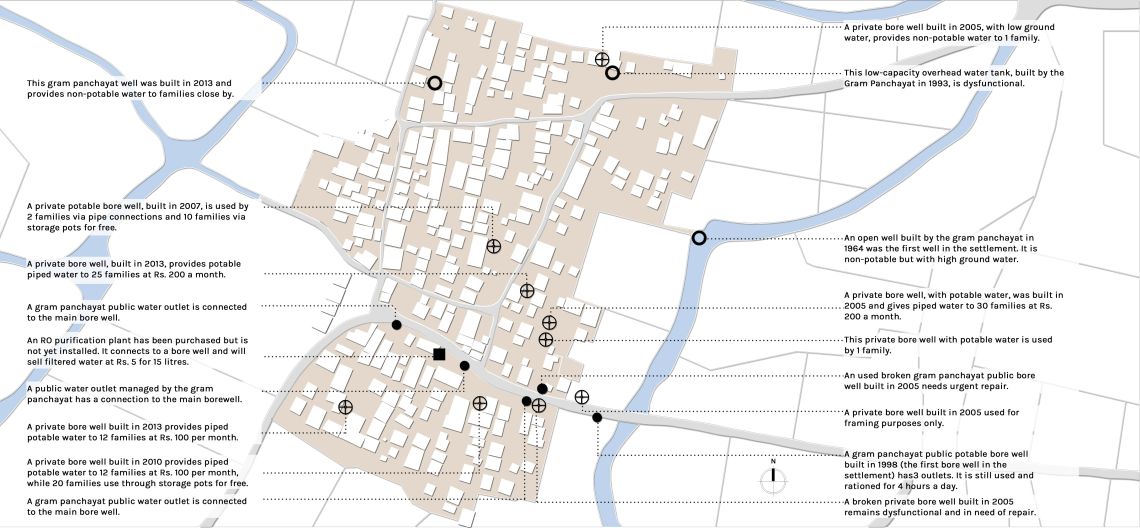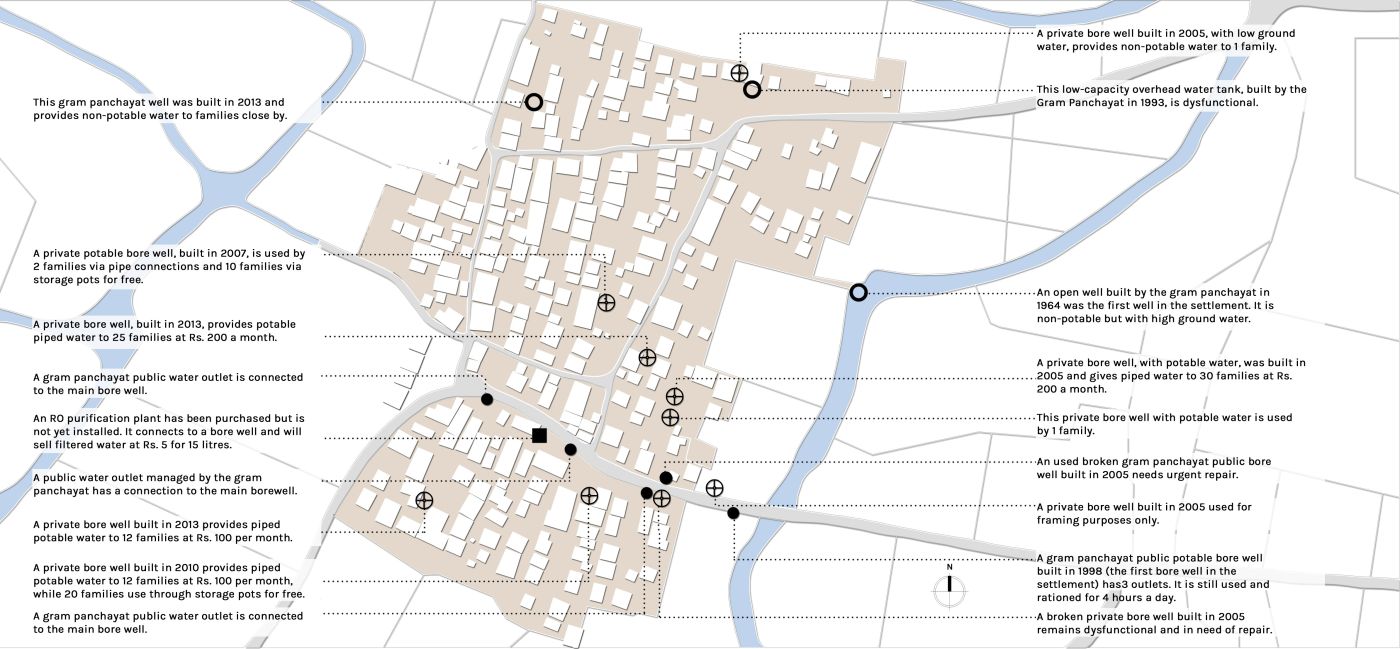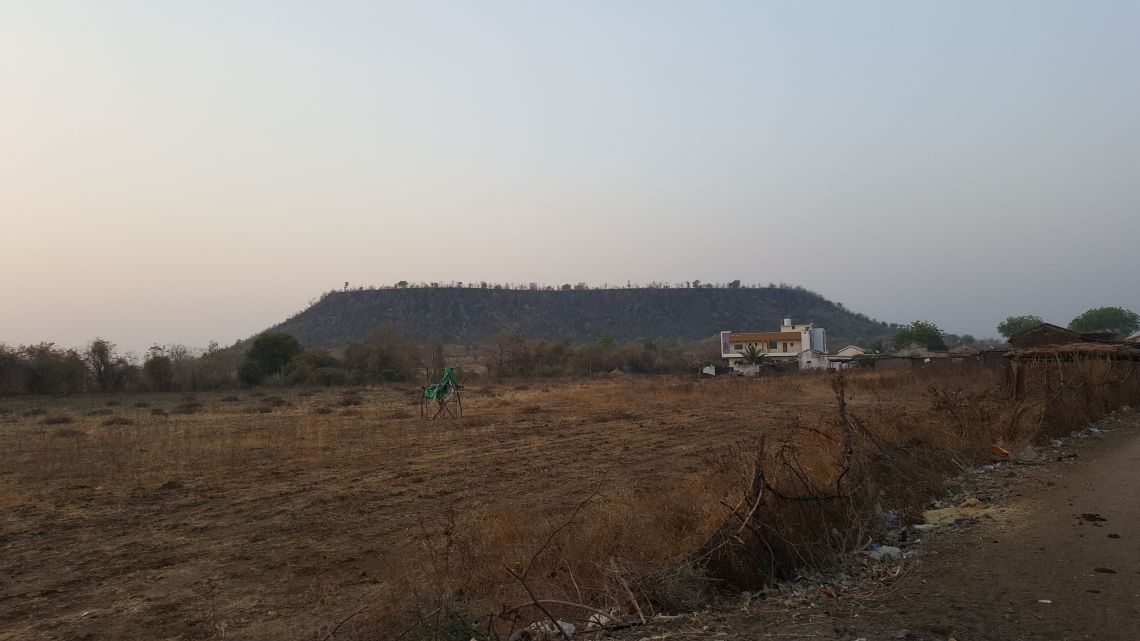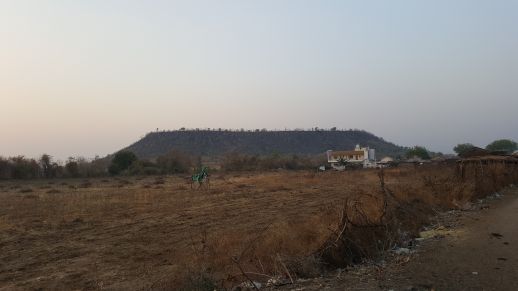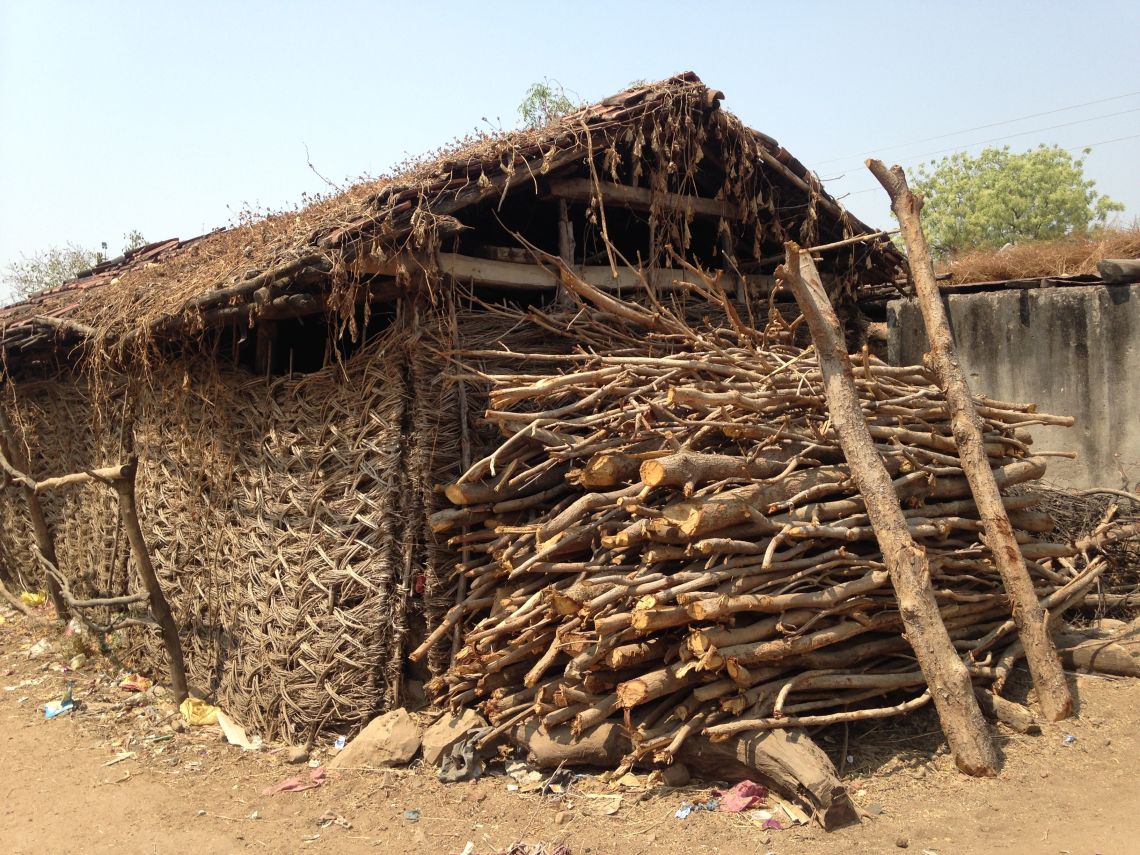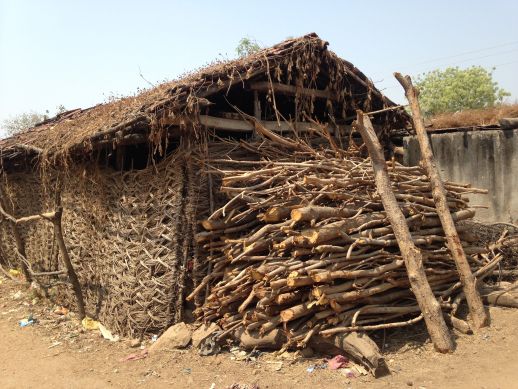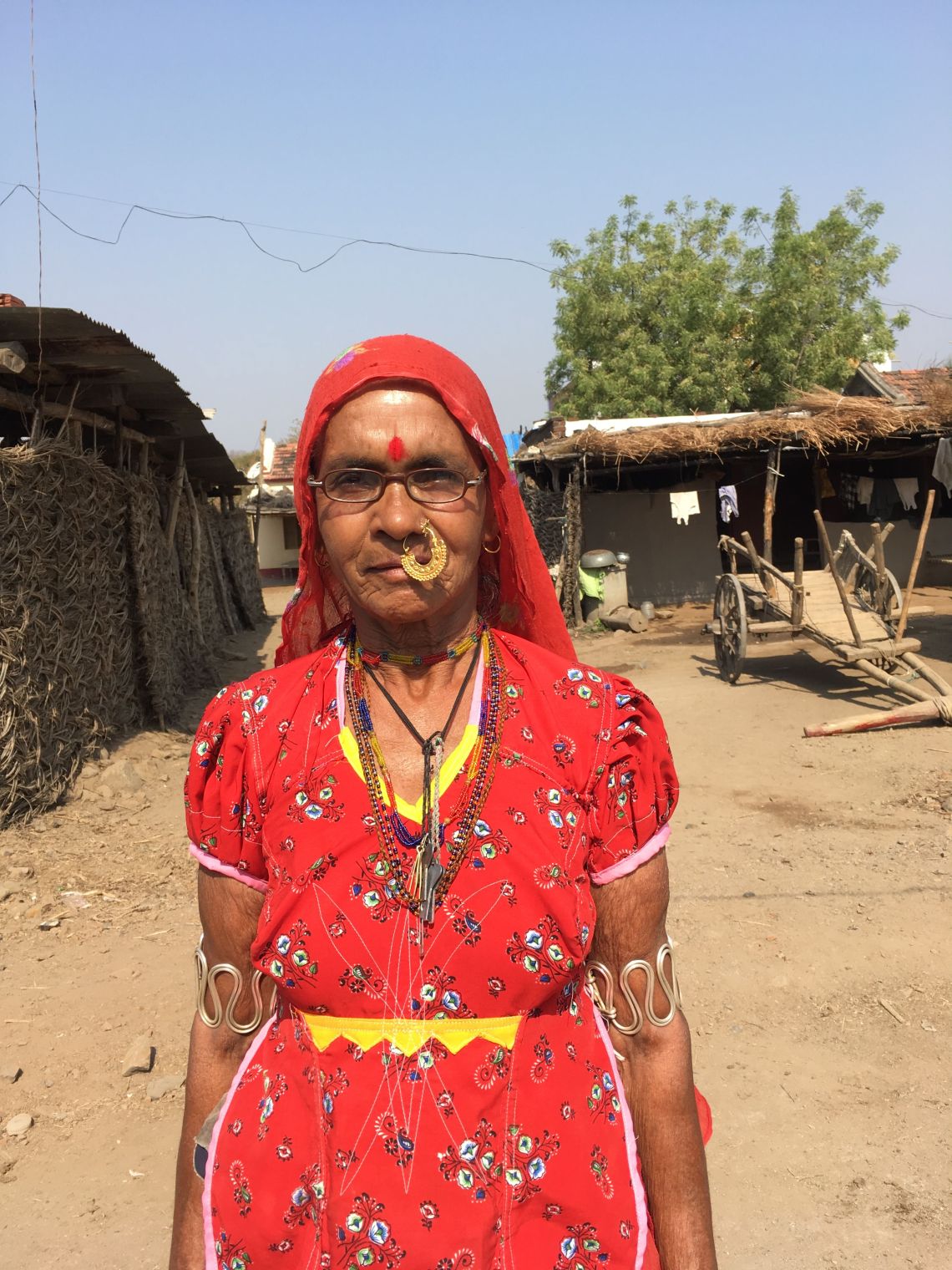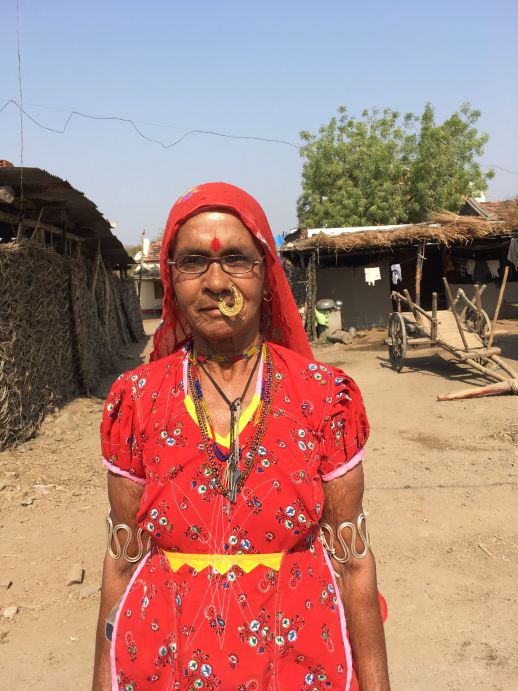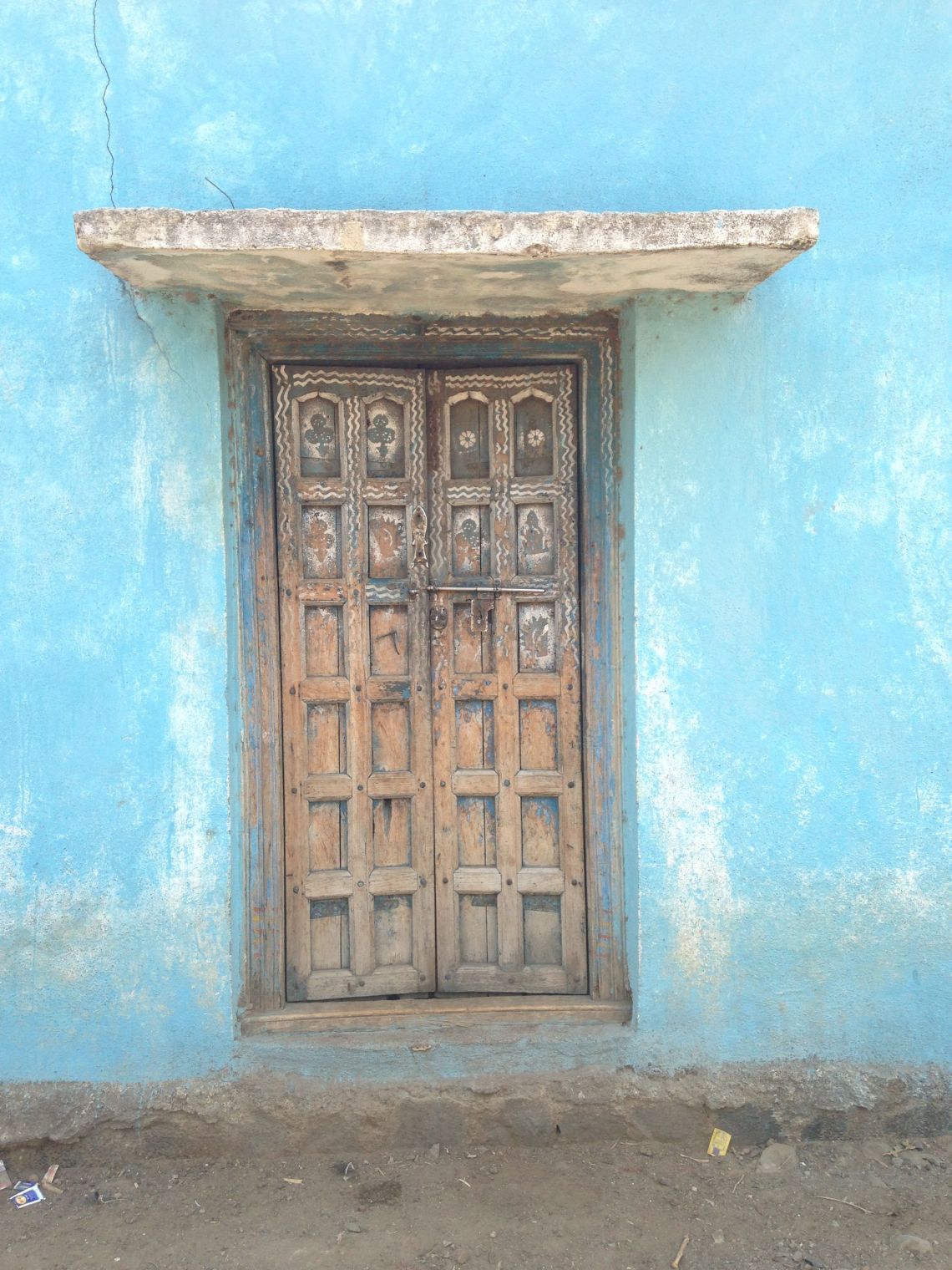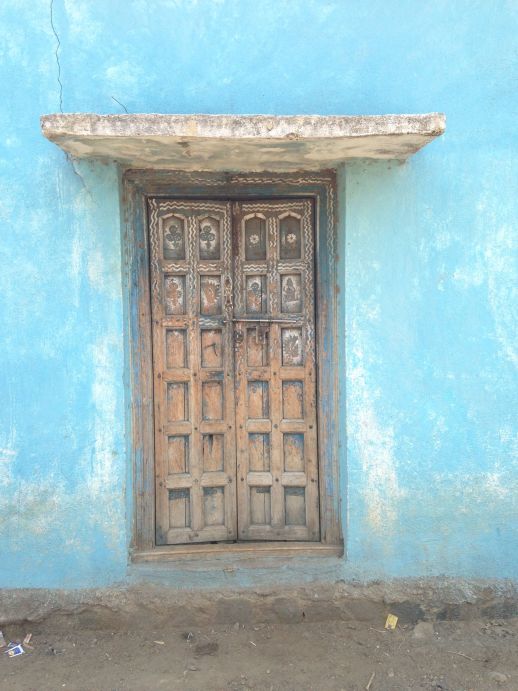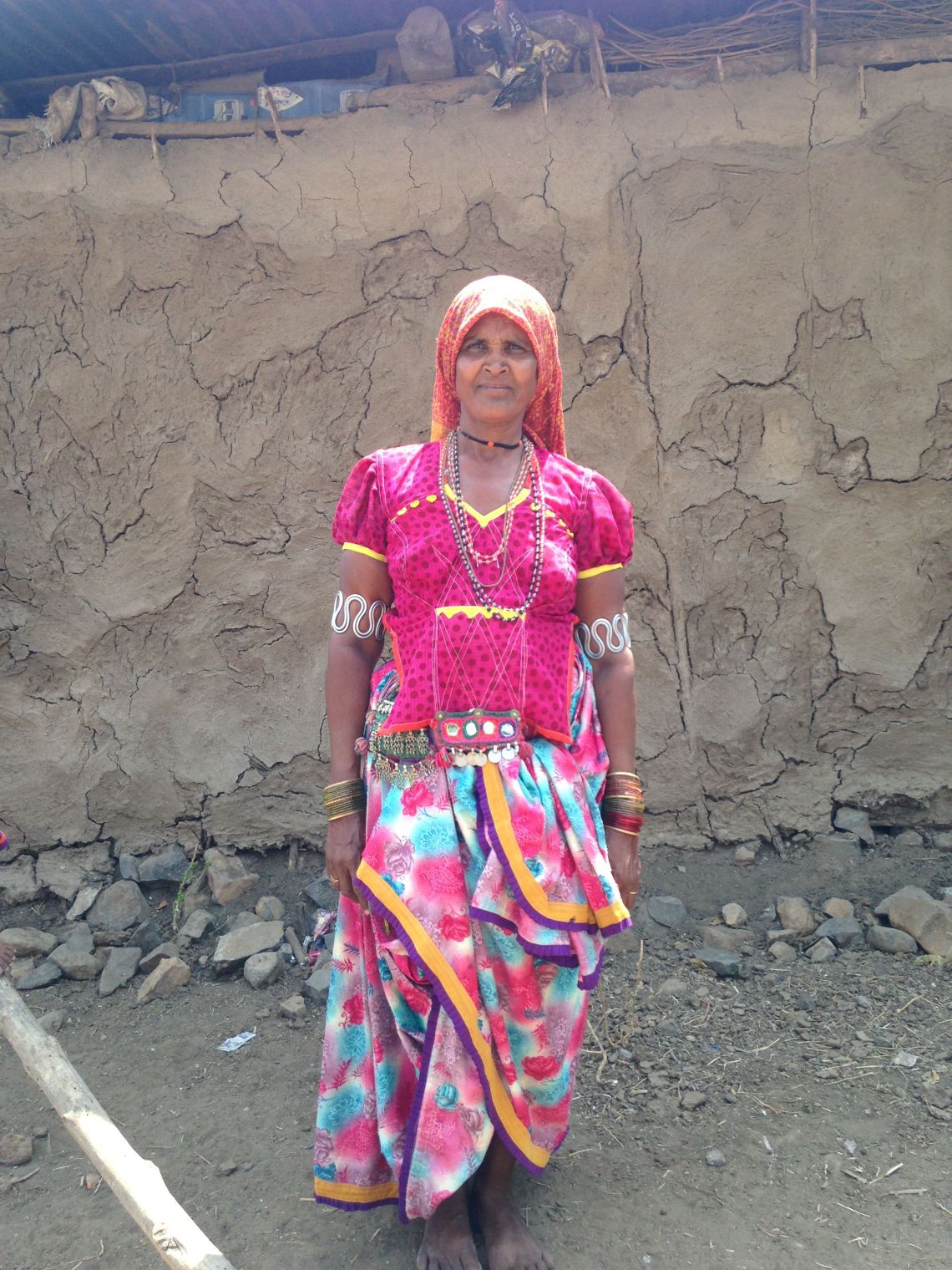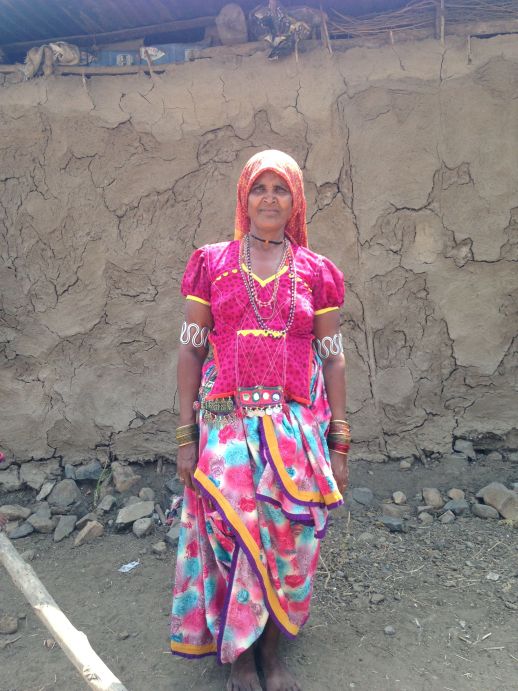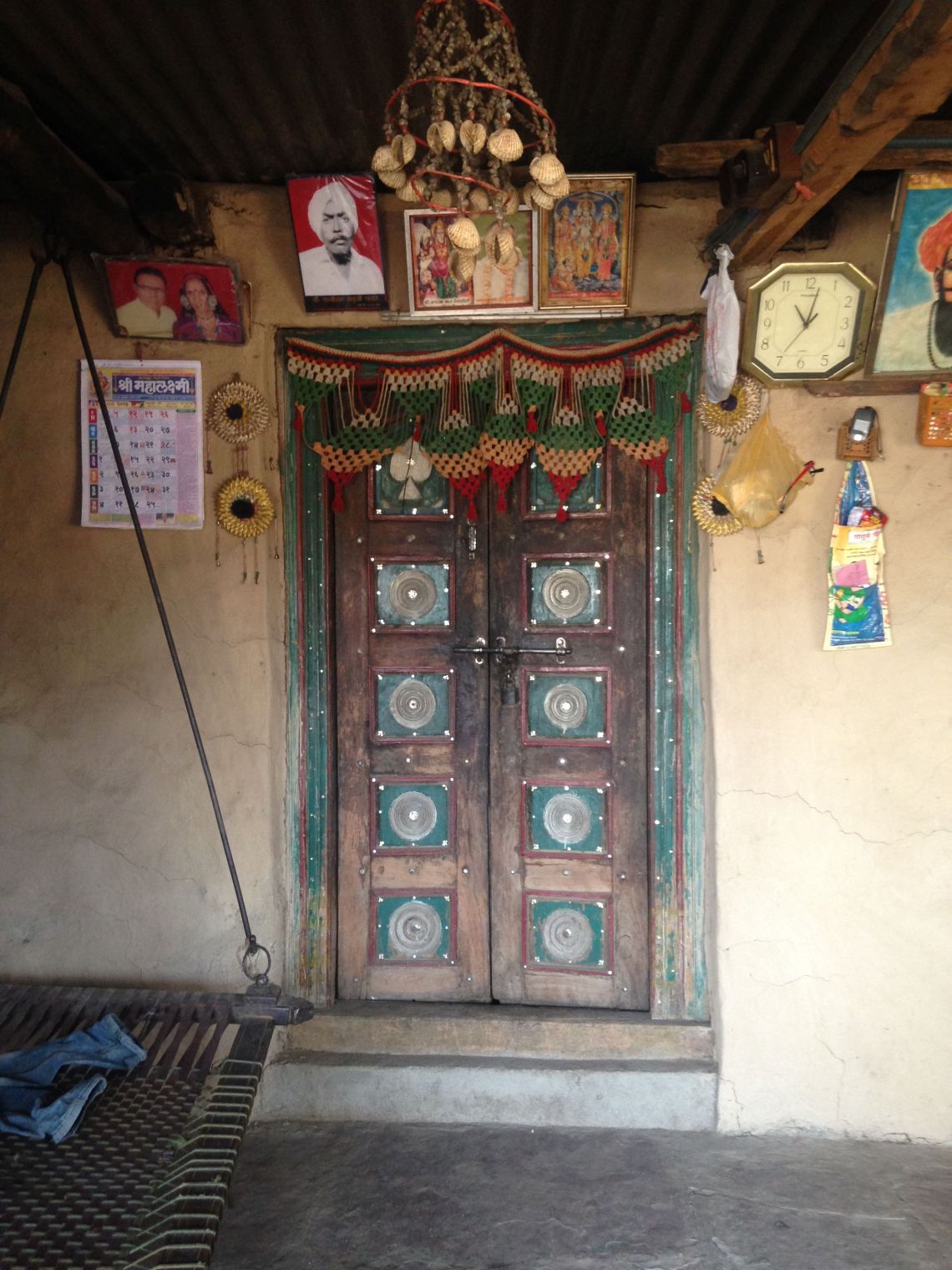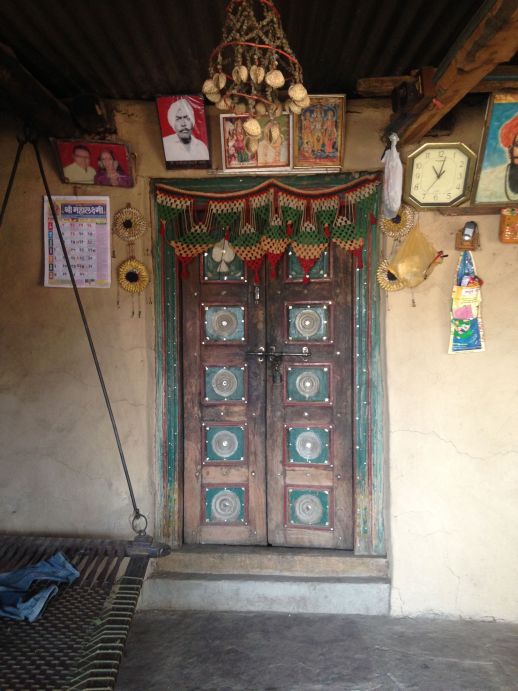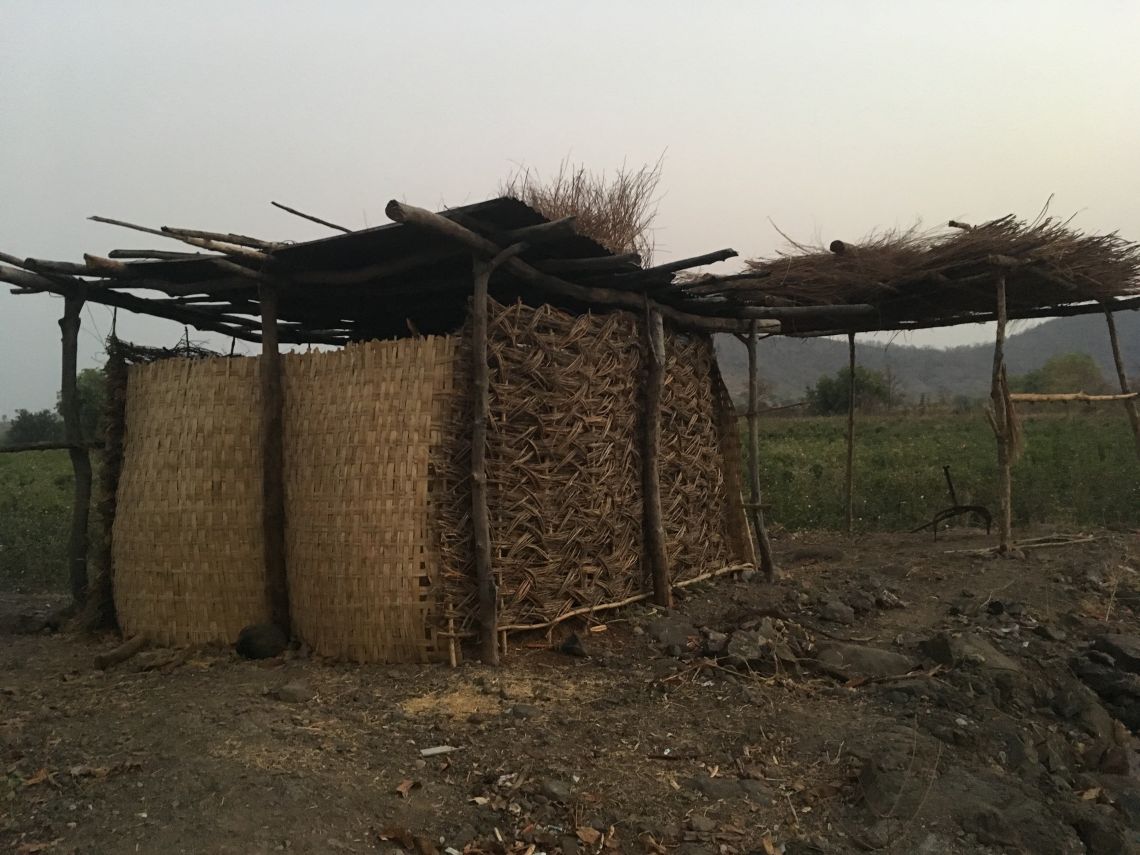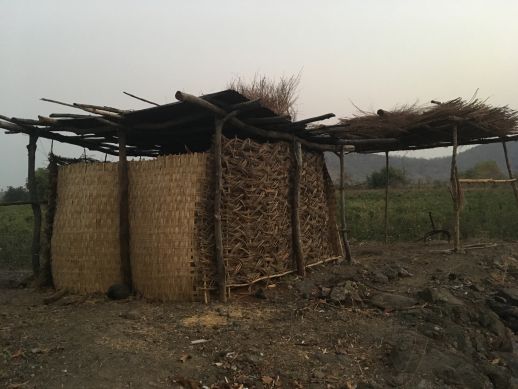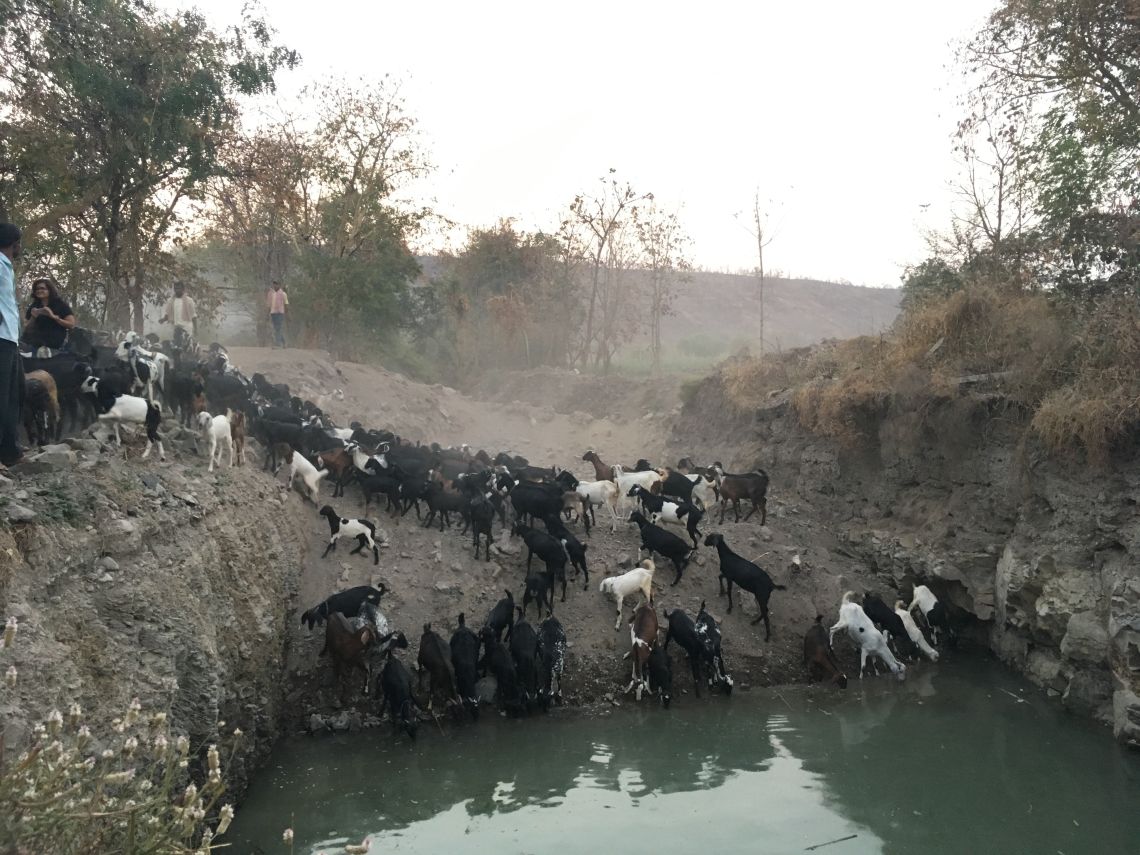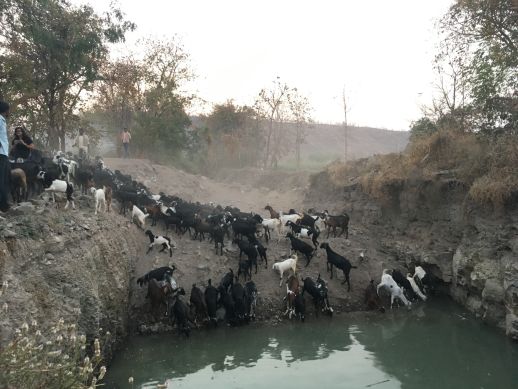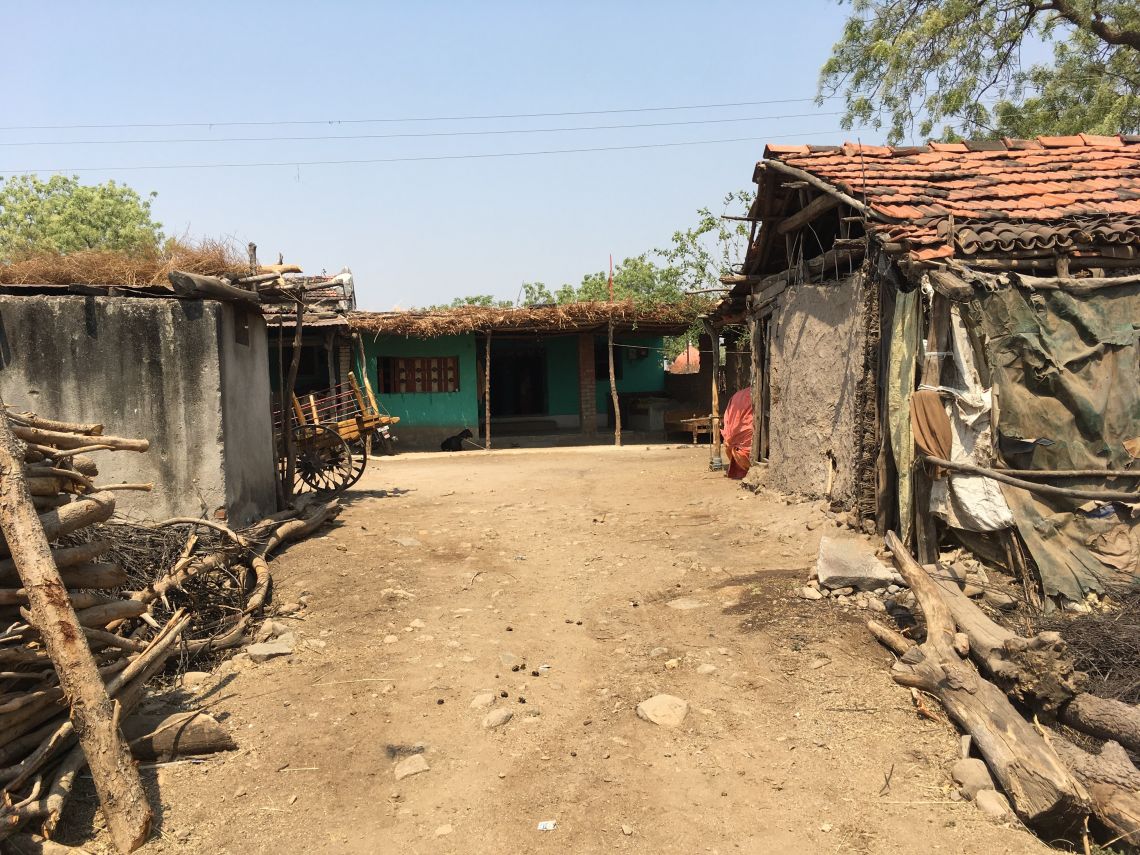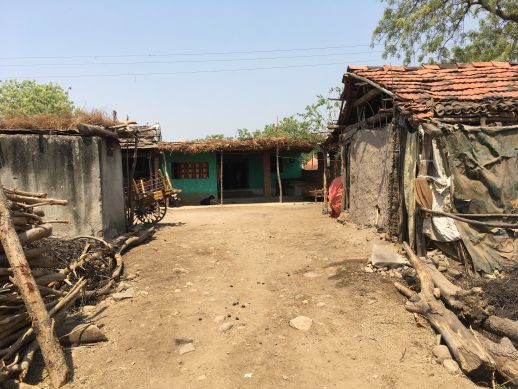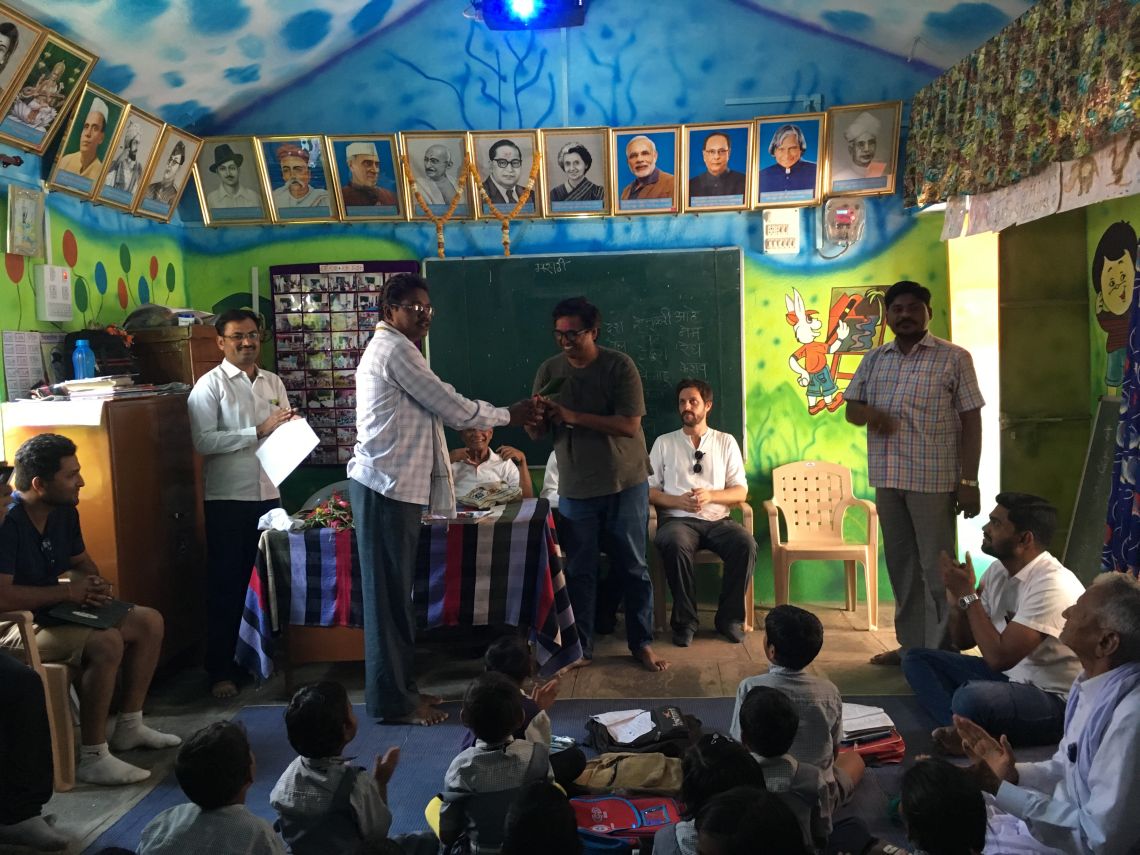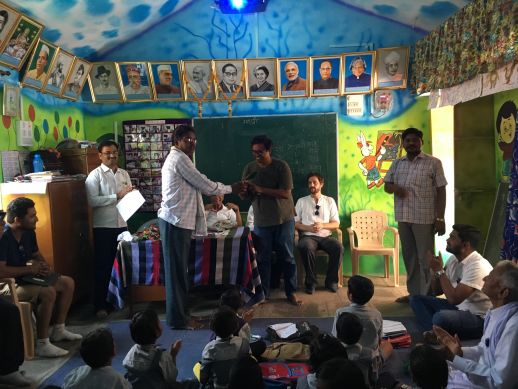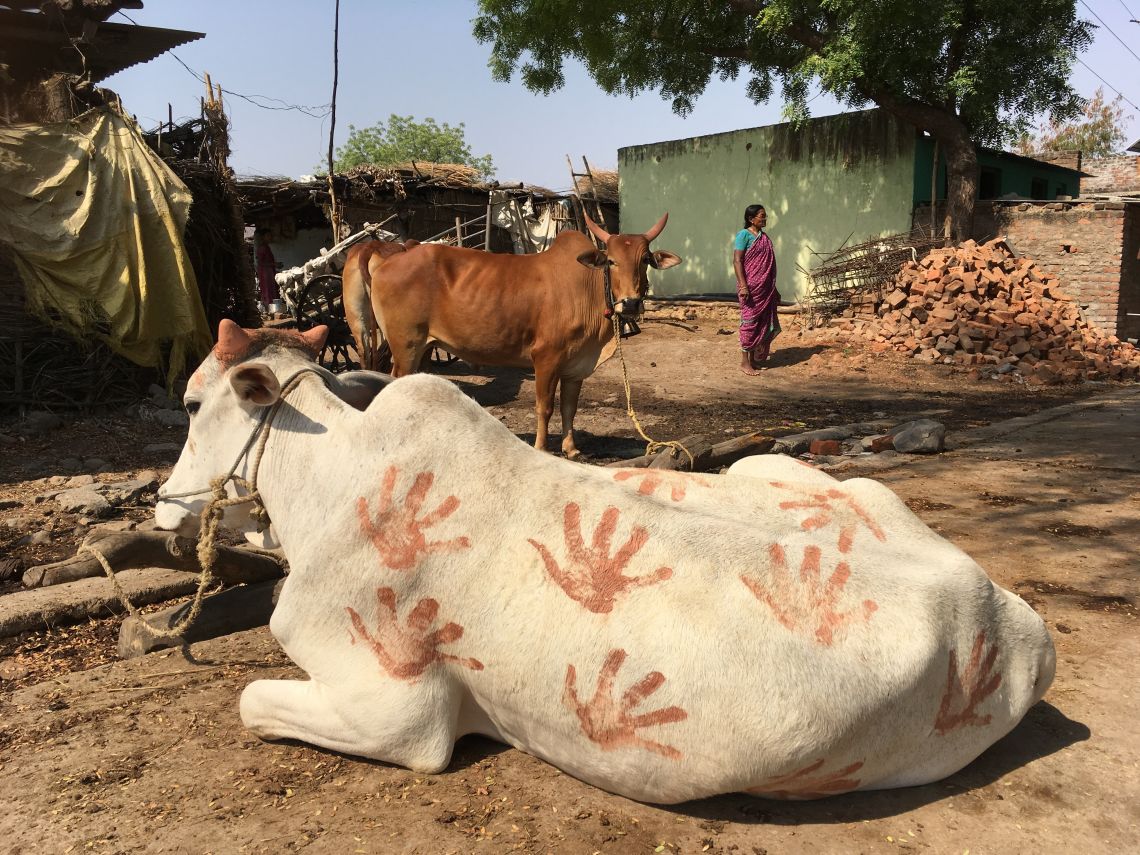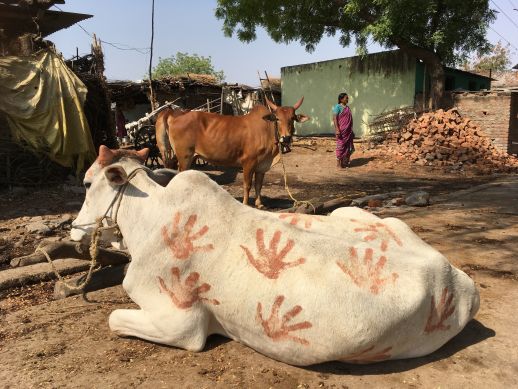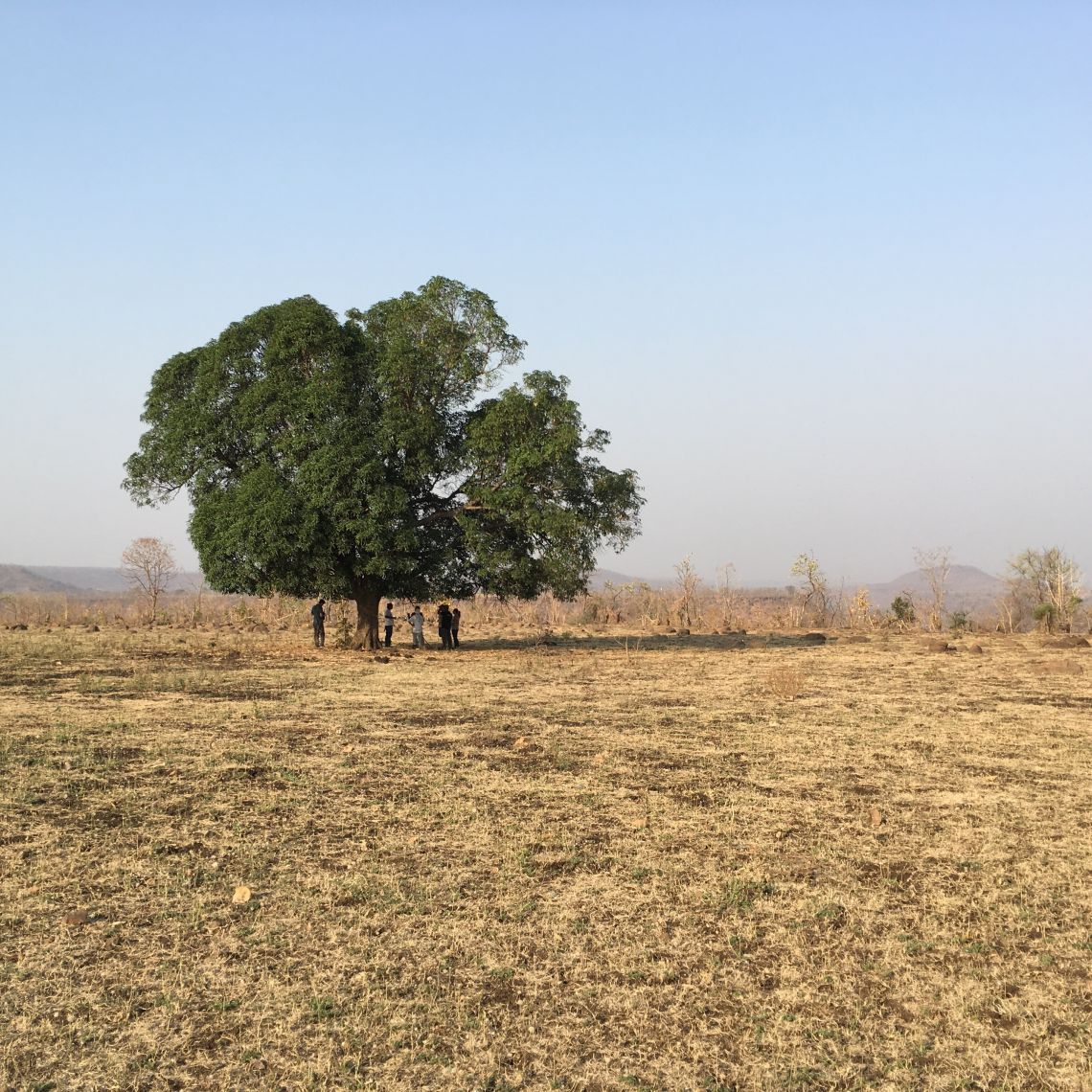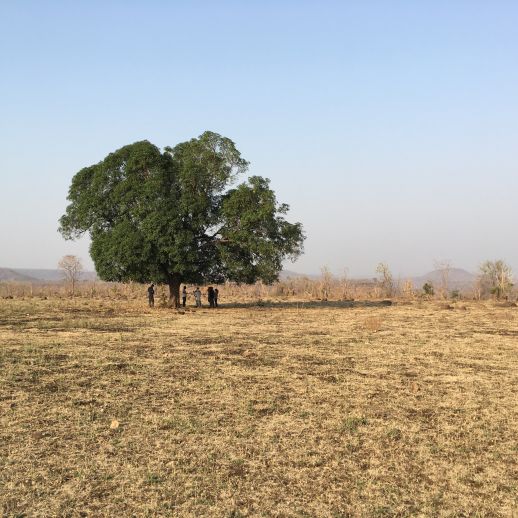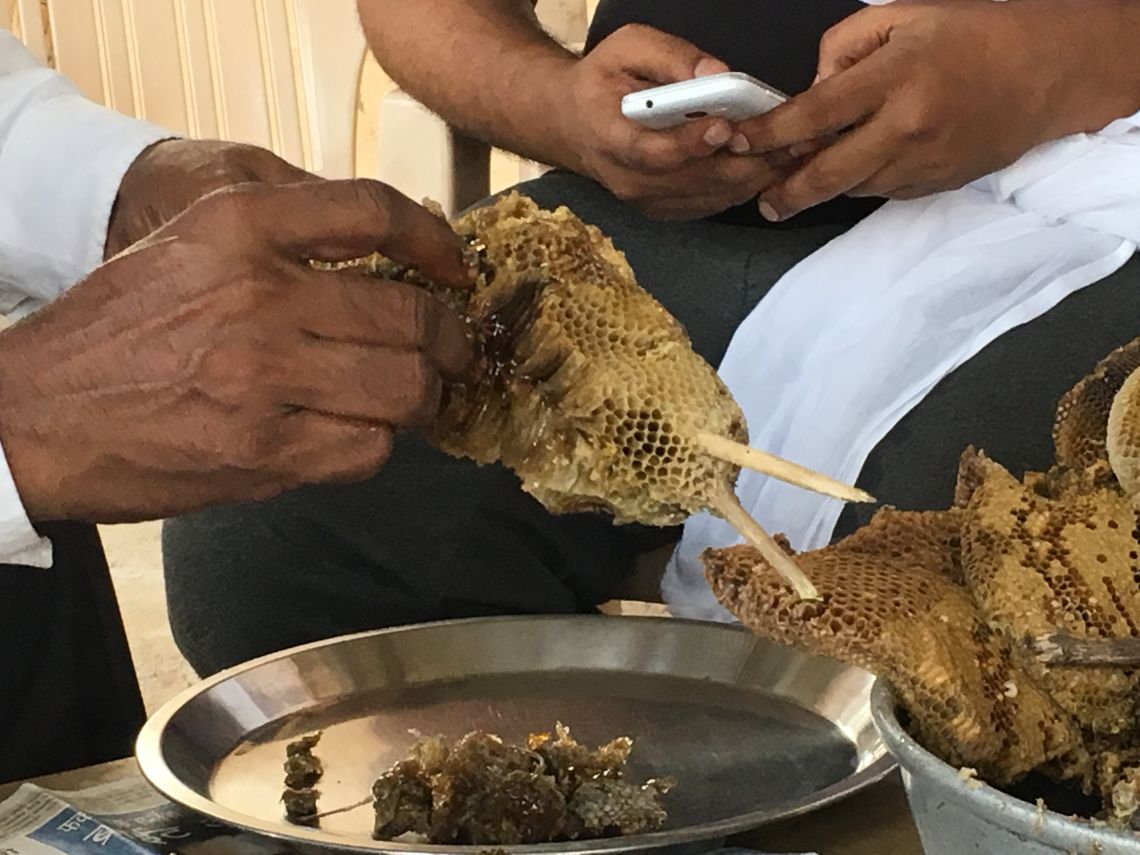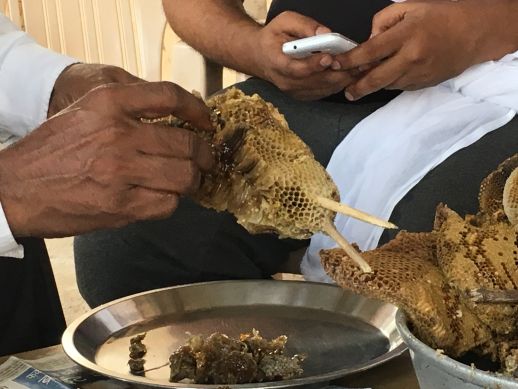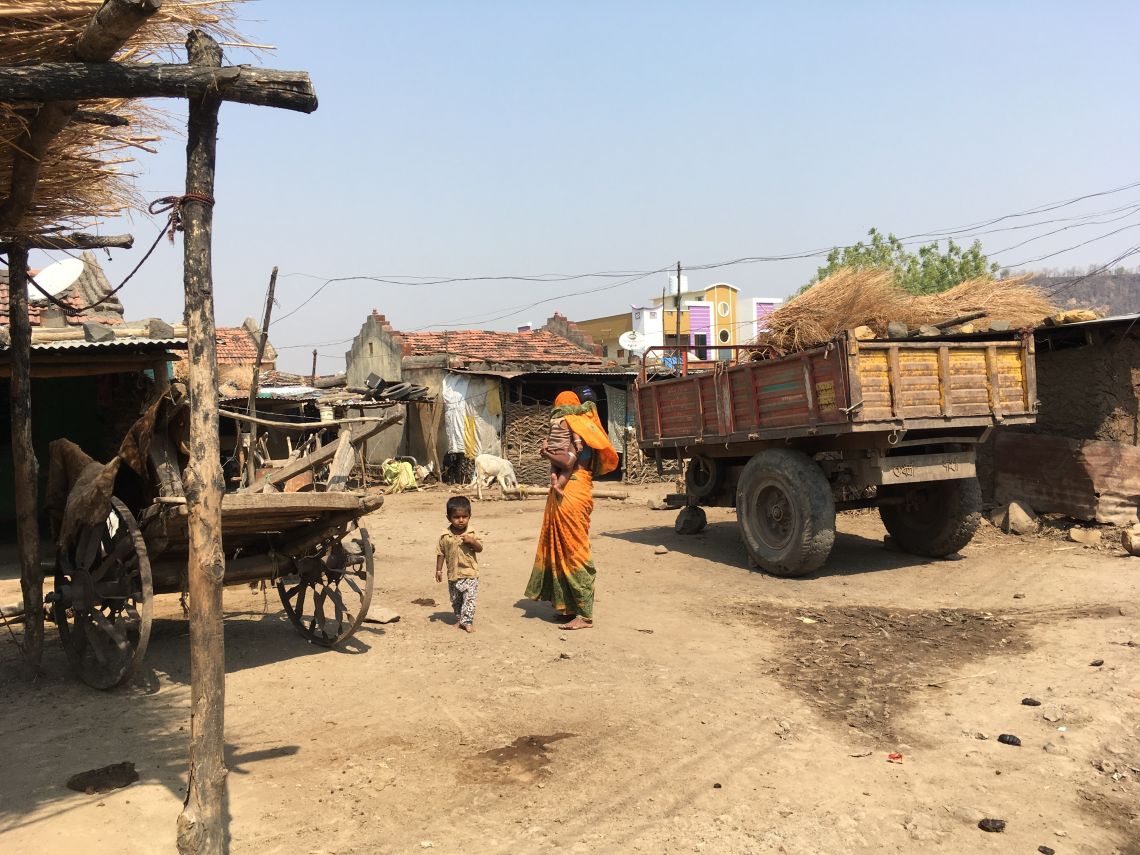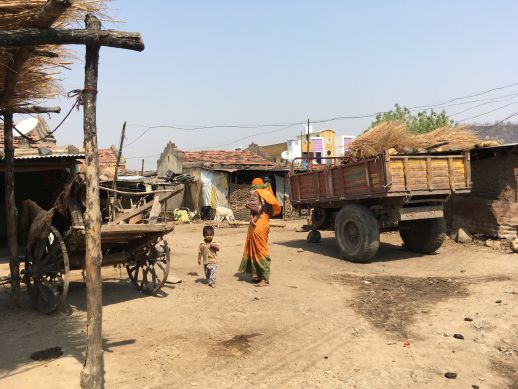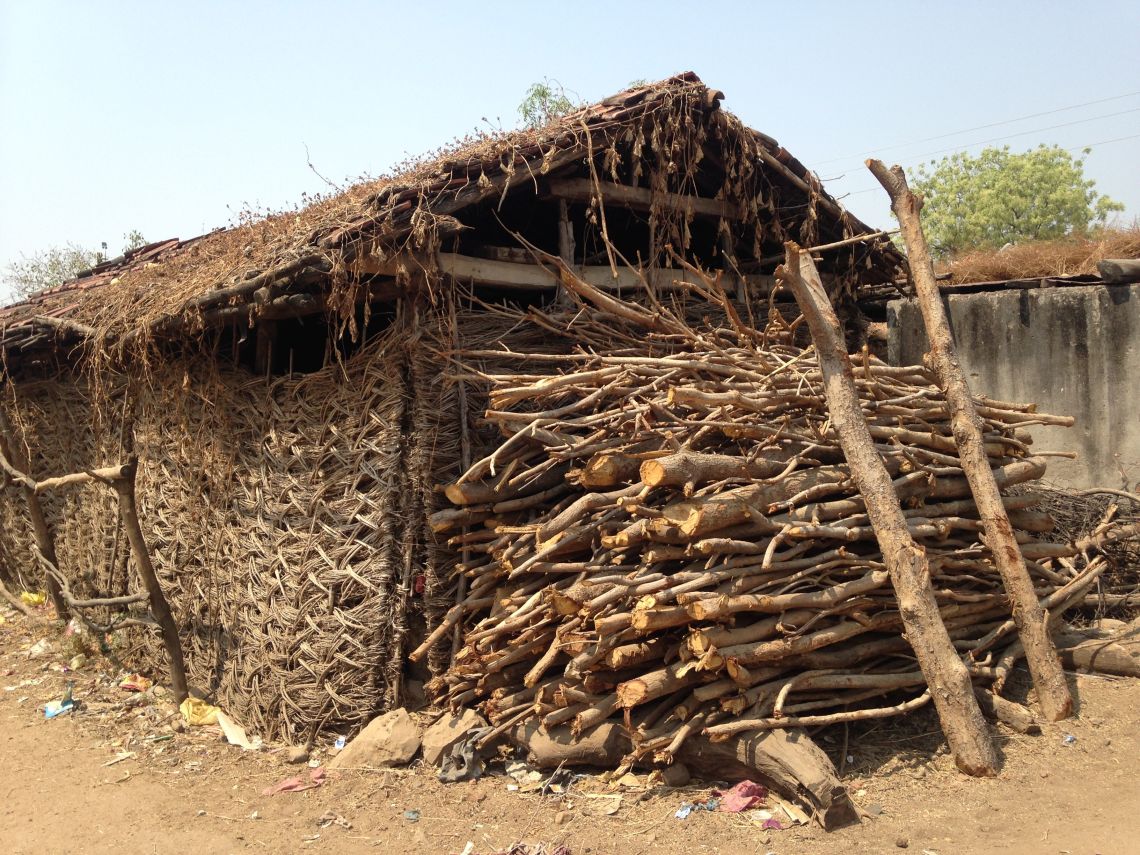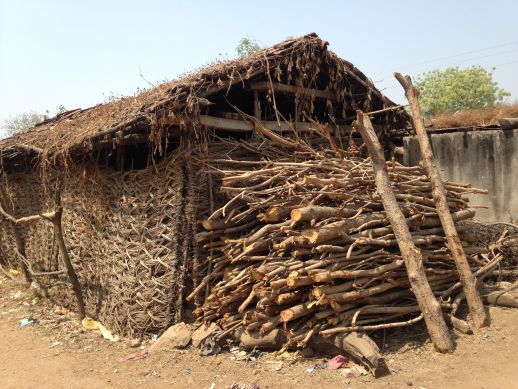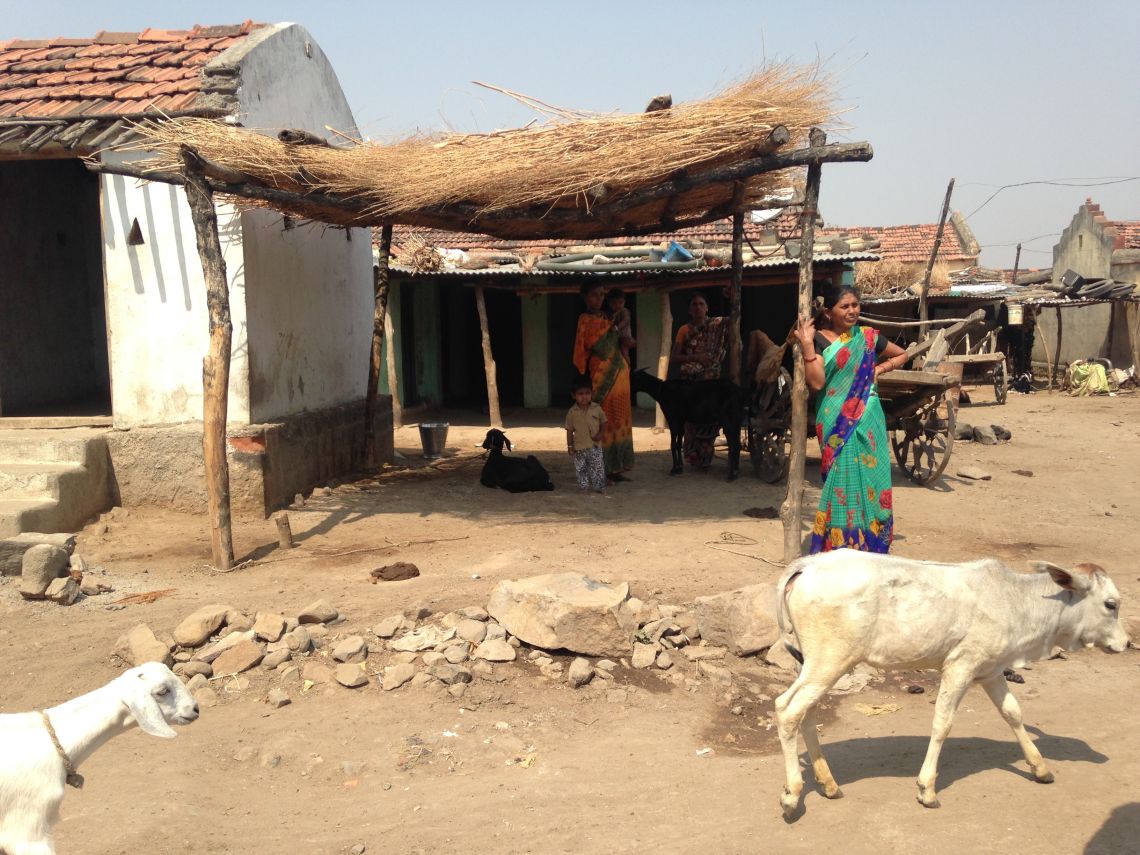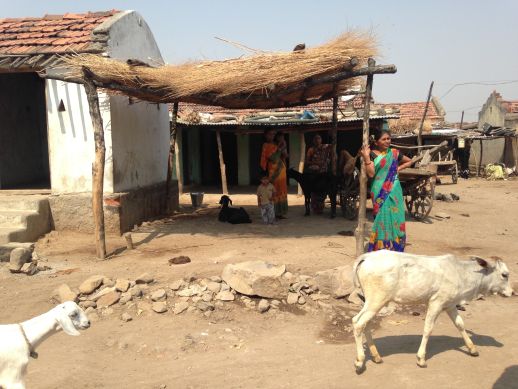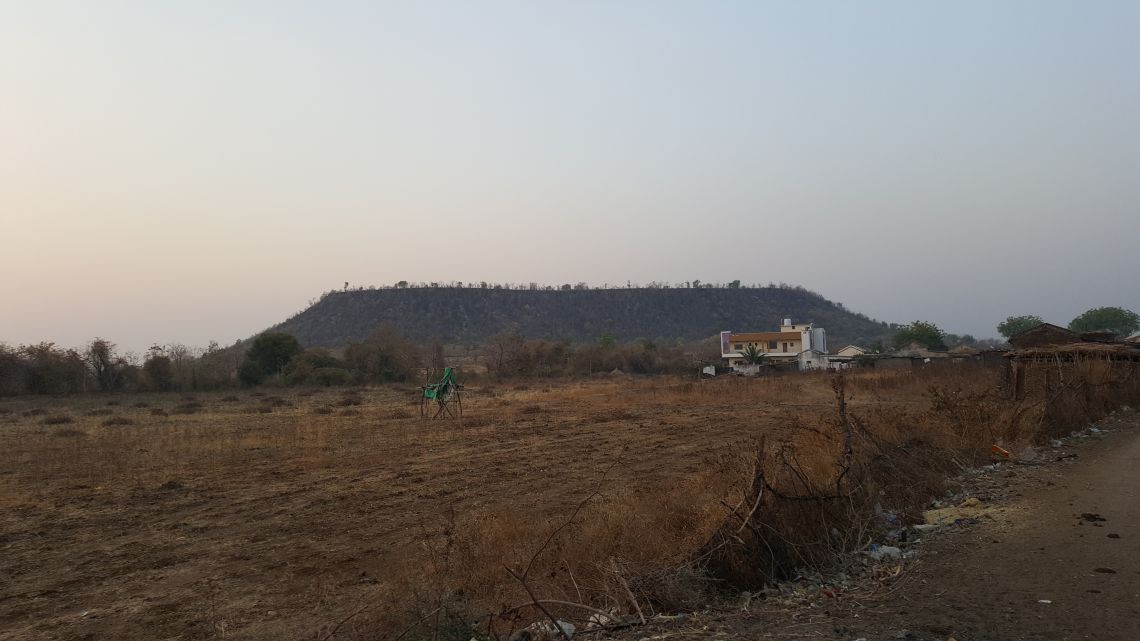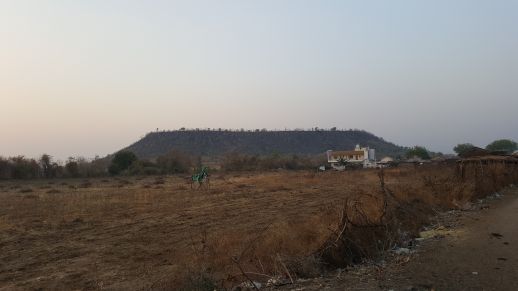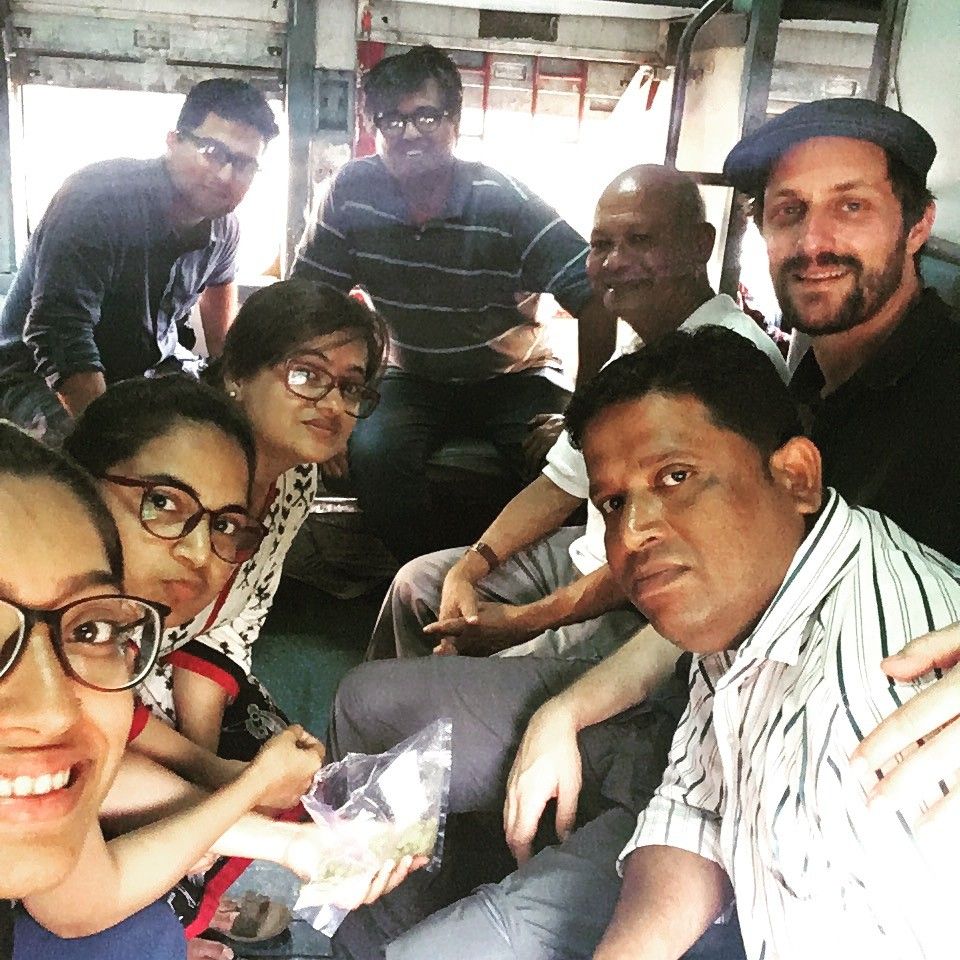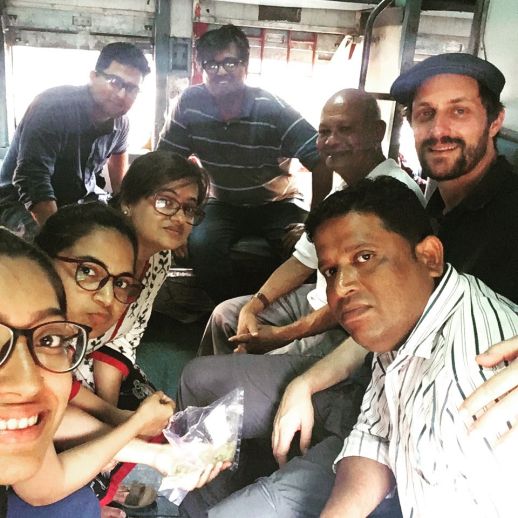A Thousand Plateaus
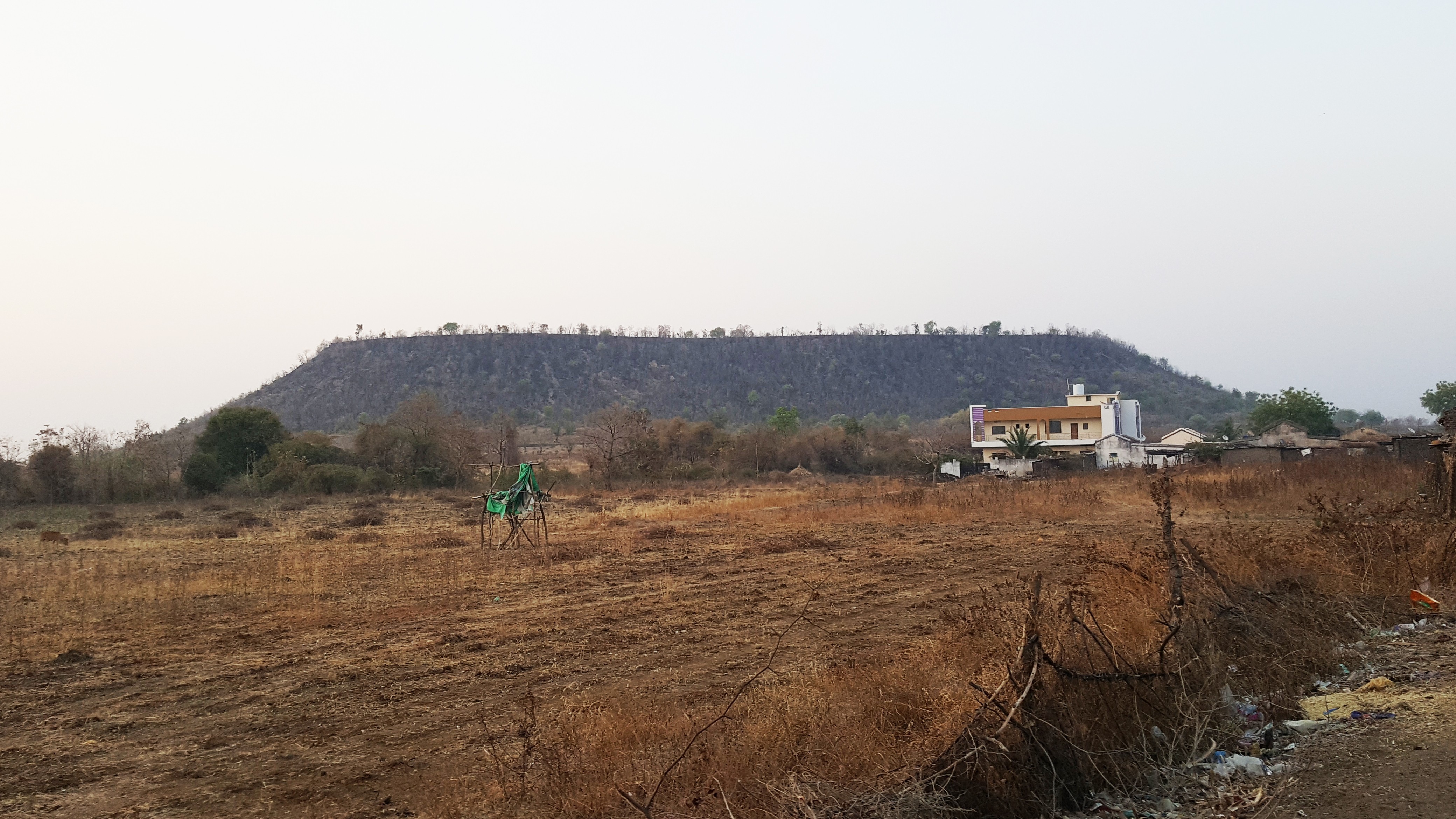
A Thousand Plateaus
Map showing water network in Singodha Tanda (a gyspy camp in rural Maharashtra).
In a world that is deeply polarised on identity lines, it is humbling to come across the efforts of Mohan Rao Rathod and his community. They are working hard to improve living conditions in Singodha, a village on the border of Maharashtra and Telangana, accessible by train from Kinwat station between Mumbai and Nagpur.
Strange hills with steep slopes and flat tops surround Singodha. Before sunrise, on a day that was going to be one of the hottest this year (so far), Rathod took our little team atop one of these plateaus. From there, his village looked like a mirage—a stubborn little settlement surrounded by dry fields. The only thing that prevents these fields from turning into a desert is the monsoon and the efforts of people at irrigating them for the rest of the year. Rathod’s dream is to harvest the rains and grow a forest on one of these plateaus, where his father once grew vegetables. He feels this hill may have a role to play in the village’s survival.
Later that same day, Rathod leads us through the labyrinthine maze of a fragile infrastructure that constitutes the village’s local water supply system. A network of surface and deep borewells service the over 350 fellow families of the Banjara community to which he belongs. His tanda—a settlement or camp—is located on the fringes of a much older village, away from the main water sources.
Understanding Mahua
A dry tank built a couple of decades ago stands wasted, on the edge of the settlement, testimony to past bureaucratic entanglements and ill-conceived plans. Everyone acknowledges that even in this water-stressed region, what is actually needed is sensible management and not divine intervention. Whatever stress nature produced could have been eased a long time ago.
At present the farmers are dependent on water-intensive cotton, introduced during the colonial era, besides edible crops like lentils. The dry landscape is punctuated by a handful of neem and mahua trees—both of which need very little water to survive. A chilling anecdote of a civil service officer who chopped several mahua trees in his zealous drive to pursue a colonial law criminalising the production of an alcoholic drink made from its flowers, shows how much human intervention has actively worked against the environment.
Rathod’s community is a huge one when seen across the matrix of the state, and even bigger when enumerated on a national grid (not to mention its speculated global connections to European gypsy history). It has become an intrinsic part of the political apparatus of the state, including sending a celebrated Chief Minister to the power corridors of Mumbai.
For Rathod, who worked as a Municipal Welfare Officer in Mumbai for most of his life, moving from the village to the city and back is not marked by disjunctures and disruptions. It is the norm. He now feels it is the time to give back all that he got from his community—primarily a support system that helped him through the years he was away.
He has managed to mobilise most villagers to repair a well that had collapsed during an earlier phase of construction and plans to lay pipes to bring water closer to the homes, so women (who always seem to be assigned the hardest tasks) don’t have to walk and trudge long distances every day. All of this is only the start of his efforts. His community is fully aware of the dangers of deep boring wells that rapidly deplete precious ground water supply. Each borewell in the village is a heavy investment and everyone is weighed down by the perennial fear of depletion.
For this reason, his dreams always include afforestation. He has a list of local varieties of trees that he feels can be a long-term investment in greening the landscape. With a twinkle in his eye, he wonders why the grand economy of the grape-wine belt from Nasik cannot be implemented here, with the Mahua tree as a perfect natural resource to boost the local economy.
Not merely H2O
At the end of the water-stressed tunnel rests a hope; one that is based on circulation in which water is not a stock—not merely H2O as Ivan Illich succinctly puts it—but part of an eternal cycle of movement and flows. In the same vein, architect Dilip da Cuhna argues that we lose perspective when we move from a monsoon-sensitive approach of water management to a tributary or channel-based approach. When we shift our focus from looking at water cycles in which infrastructure includes forests and surface wells, to one that is exclusively obsessed by canals and boreholes.
The desperate reliance on deep ground water and farming is symptomatic of the traumatic shift experienced by the Banjaras since the British government criminalised them, like the Mahua tree itself, in this part of the country. The Banjaras—a name that signifies wanderers in nature—had for centuries derived their wealth and culture from their ability to circulate, gather, craft and trade goods, languages and knowledge over vast territories, connecting forests to cities thanks to broad community networks. Rathod hopes that as his village moves towards water management systems that harness nature’s cycles rather than defy them, its people will also reconnect with a history of cyclic movement that ensured its survival ever since the community started wandering the world.
The article was first published here as a part of the fortnightly column 'Place, Work, Folk' for The Hindu Sunday Magazine.
19.8118172, 78.2473356
Singoda Tanda
